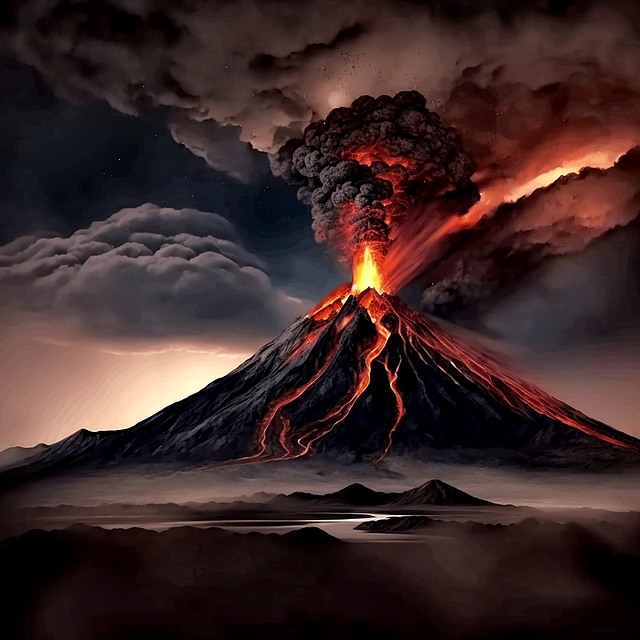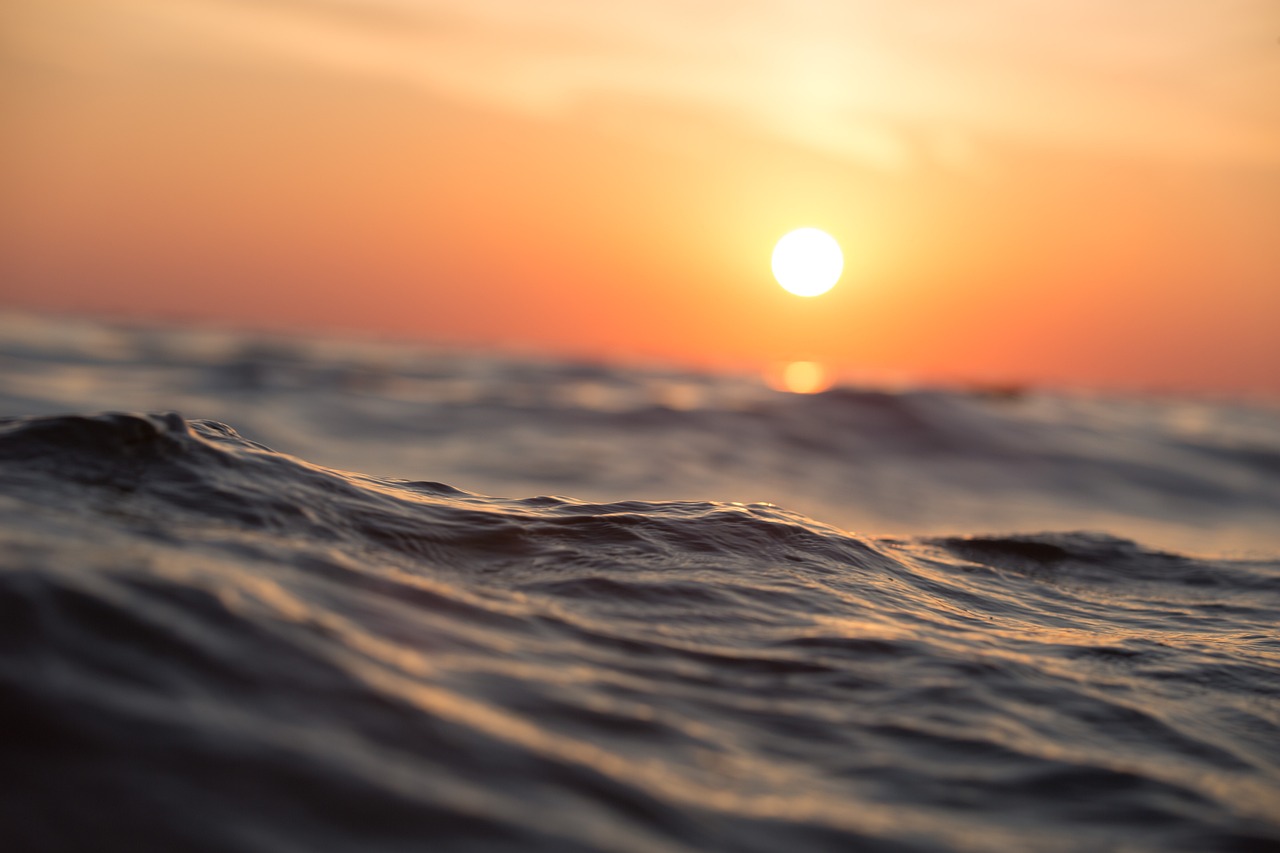What Are the Dangers of the Sea Not Known to Everyone?

The sea, with its vast expanse and enigmatic depths, has always intrigued humankind thus the question: What Are the Dangers of the Sea Not Known to Everyone? These dangers are Rip Currents, Underwater Caves and Tunnels, Submerged Rocks and Reefs, Jellyfish and Sea Urchins, Sneaker waves,Barracudas, Underwater Earthquakes and Tsunamis. Its allure is undeniable, drawing adventurers, sailors, and casual beachgoers alike.
Yet, beneath its serene surface lies a plethora of dangers, many of which remain unknown to the general public.
Understanding these hidden perils is crucial for anyone who ventures into the ocean, whether for work, play, or exploration.
The Mystery and Majesty of the Ocean
The ocean’s grandeur is matched only by its mystery. Covering more than 70% of the Earth’s surface, it is a world teeming with life and natural phenomena.
From its azure shallows to its darkest abysses, the sea holds secrets that have fascinated humans for centuries.
Why Understanding Sea Dangers Is Crucial
Knowledge of the ocean’s dangers is essential for safety and preparedness. Misjudging the sea can lead to dire consequences, making awareness and education vital. Understanding these risks helps prevent accidents and saves lives.
Common Misconceptions About Ocean Safety
Many people underestimate the ocean’s power and unpredictability. Common misconceptions include the belief that coastal waters are always safe and that experienced swimmers are immune to marine dangers. These falsehoods can lead to complacency and increased risk.
Hidden Perils Beneath the Waves
Rip Currents: The Invisible Threat
Rip currents are powerful, narrow channels of fast-moving water that can quickly pull swimmers away from shore. Often invisible from the surface, they pose a significant danger, especially to those unfamiliar with their behavior. Knowing how to identify and escape rip currents is essential for beach safety.
Underwater Caves and Tunnels: Entrapment Hazards
Underwater caves and tunnels are alluring to divers but can be treacherous. These natural formations can lead to disorientation, entrapment, and, without proper training and equipment, fatal consequences. Exploration of these areas should be left to experienced and equipped divers.
Submerged Rocks and Reefs: The Silent Menace
Submerged rocks and reefs lie just below the surface, hidden from view and ready to cause harm to unsuspecting swimmers, snorkelers, and boaters.
These obstacles can lead to serious injuries and damage to vessels, making navigation charts and local knowledge indispensable.
Marine Life Dangers
Venomous Creatures: Jellyfish and Sea Urchins
The ocean is home to various venomous creatures, such as jellyfish and sea urchins. Contact with these animals can result in painful stings, allergic reactions, and, in some cases, life-threatening conditions. Recognizing and avoiding these creatures is crucial for safe sea interaction.
Aggressive Marine Animals: Sharks, Barracudas, and More
While shark attacks are rare, they are among the most feared ocean dangers. Barracudas and other aggressive marine animals also pose threats.
Understanding their behavior and maintaining a respectful distance can help minimize the risk of encounters.
Camouflaged Predators: Stonefish and Scorpionfish
Stonefish and scorpionfish are masters of camouflage, blending seamlessly with their surroundings. Their venomous spines can deliver excruciating stings. Awareness and careful observation are key to avoiding these hidden predators.
Environmental and Natural Hazards
Underwater Earthquakes and Tsunamis
Underwater earthquakes can trigger tsunamis, leading to devastating waves that can cause widespread destruction and loss of life. Coastal communities must have early warning systems and evacuation plans in place to mitigate these risks.
Rogue Waves: The Unpredictable Giants
Rogue waves are enormous, unexpected waves that can appear without warning, posing a severe threat to ships and offshore structures.
These waves can reach heights of 100 feet or more, making them a formidable hazard for mariners.
Sudden Weather Changes: Storms and Hurricanes
The ocean’s weather can change rapidly, turning calm seas into dangerous stormy waters. Hurricanes and tropical storms bring strong winds, heavy rains, and towering waves, making weather forecasting and monitoring essential for safety.
Human-induced Hazards
Pollution and Debris: Hidden Dangers in the Water
Marine pollution, including plastic debris and chemical contaminants, poses significant risks to both marine life and human health.
These pollutants can cause injuries, illnesses, and long-term environmental damage.
Oil Spills and Chemical Contaminants
Oil spills are catastrophic events that can decimate marine ecosystems and harm human populations. Chemical contaminants from industrial runoff further exacerbate the problem, highlighting the need for stringent environmental protections.
Shipwrecks and Underwater Wreckage
The ocean floor is littered with shipwrecks and other underwater debris, which can be hazardous to divers and marine navigation. These wrecks often become entangled with fishing nets and pose risks of entrapment and injury.
The Perils of Deep Sea Exploration
Decompression Sickness: The Bends
Decompression sickness, or “the bends,” is a serious condition that can affect divers who ascend too quickly.
It occurs when dissolved gases in the body form bubbles, leading to severe pain, paralysis, and even death. Proper dive planning and adherence to safety protocols are vital.
Underwater Pressure: The Crushing Force
The deeper one dives, the greater the pressure. This immense force can crush human organs and implode equipment not designed for such depths.
Understanding and respecting depth limits are crucial for deep-sea exploration.
Equipment Malfunctions: The Technological Risk
Reliance on technology in deep-sea exploration brings the risk of equipment malfunctions. Failures in life-support systems, communication devices, and navigation tools can turn a routine dive into a life-threatening situation.
Navigational Hazards
Strong Currents and Tides: The Unseen Forces
Strong ocean currents and tides can sweep swimmers and vessels far from their intended paths.
Knowledge of local tidal patterns and current maps is essential for safe navigation and coastal activities.
Fog and Limited Visibility: Navigational Challenges
Fog and limited visibility can disorient even the most experienced mariners. These conditions increase the risk of collisions and groundings, making radar and GPS systems indispensable tools for safe navigation.
Magnetic Anomalies: The Compass Conundrum
Magnetic anomalies can interfere with compass readings, leading to navigation errors. Understanding the presence of such anomalies and using alternative navigation methods can help prevent mishaps.
The Psychological Effects of the Ocean
Isolation and Loneliness: The Mental Strain
Extended time at sea can lead to feelings of isolation and loneliness, impacting mental health. Crew members on long voyages must have strategies to combat these psychological effects to maintain well-being.
Fear and Panic: Psychological Reactions to Sea Hazards
Encountering unexpected dangers at sea can induce fear and panic, which can be as perilous as the physical threats themselves. Training and preparedness are key to managing these reactions effectively.
Sensory Deprivation: The Underwater Experience
Diving into the depths can lead to sensory deprivation, where the lack of light and sound creates a disorienting environment. Divers must be trained to handle these conditions to avoid panic and maintain focus.
Health Risks in Marine Environments
Saltwater Inhalation and Drowning Risks
Saltwater inhalation can lead to severe respiratory issues and drowning, even for strong swimmers. Understanding the risks and practicing safe swimming techniques are crucial for preventing accidents.
Hypothermia and Cold Water Shock
Cold water can quickly lead to hypothermia and cold water shock, impairing physical and mental abilities. Proper gear and knowledge of cold-water survival techniques are essential for safety.
Marine Bacteria and Infections
Marine environments harbor bacteria and pathogens that can cause infections. Open wounds and cuts are particularly susceptible, making it important to practice good hygiene and seek medical attention for any injuries.
Economic and Societal Impacts
Economic Losses Due to Maritime Accidents
Maritime accidents can lead to significant economic losses, affecting shipping companies, fisheries, and coastal economies. Preventative measures and safety regulations are essential to minimize these impacts.
The Impact on Coastal Communities
Coastal communities often bear the brunt of ocean-related disasters, facing loss of life, property damage, and economic hardship. Strengthening community resilience and emergency preparedness is vital.
The Cost of Search and Rescue Operations
Search and rescue operations for maritime incidents are costly and resource-intensive. Investing in prevention and safety education can reduce the need for these operations and save lives and resources.
Cultural and Historical Perspectives
Sea Myths and Legends: Reflecting Ancient Fears
Throughout history, cultures have created myths and legends to explain the ocean’s mysteries and dangers. These stories reflect ancient fears and underscore the importance of respecting the sea’s power.
Historical Maritime Disasters: Lessons Learned
Historical maritime disasters, such as the sinking of the Titanic, provide valuable lessons in safety and preparedness. Analyzing these events helps improve modern maritime practices.
Cultural Practices and Ocean Safety
Different cultures have developed unique practices and traditions to navigate and respect the ocean safely. Learning from these practices can enhance contemporary ocean safety strategies.
Technological and Scientific Solutions
Advancements in Maritime Safety Technology
Technological advancements, such as improved navigation systems and safety equipment, have made maritime activities safer. Continued innovation is essential to address emerging risks.
The Role of Marine Research in Hazard Prevention
Marine research plays a critical role in understanding and preventing ocean hazards. Ongoing studies contribute to safer practices and better hazard mitigation strategies.
Innovative Lifesaving Techniques and Equipment
Developing and implementing innovative lifesaving techniques and equipment can significantly reduce the risks associated with ocean activities. Training and access to these resources are crucial for safety.
Preparedness and Education
The Importance of Ocean Safety Education
Education is a cornerstone of ocean safety. Teaching individuals about the dangers and proper safety measures can prevent accidents and save lives.
First Aid and Emergency Response for Sea-Related Injuries
Knowing first aid and emergency response techniques for sea-related injuries is vital. Immediate and appropriate care can mitigate the severity of injuries and improve outcomes.
Community Programs and Initiatives for Ocean Safety
Community programs and initiatives focused on ocean safety raise awareness and promote safer practices. Engaging communities in these efforts fosters a culture of safety and preparedness.
Case Studies and Real-life Incidents
Famous Maritime Disasters and Their Causes
Examining famous maritime disasters, such as the Exxon Valdez oil spill, provides insights into their causes and consequences. These case studies highlight the importance of vigilance and safety measures.
Survivor Stories: Lessons from the Sea
Survivor stories offer valuable lessons and inspire a greater respect for the ocean. These personal accounts underscore the importance of preparedness and safety awareness.
Statistical Analysis of Sea-related Accidents
Analyzing statistics on sea-related accidents helps identify trends and areas for improvement. Data-driven approaches enhance safety measures and prevent future incidents.
The Future of Ocean Exploration
Sustainable Practices for Safer Seas
Adopting sustainable practices in ocean exploration and activities helps protect marine environments and ensures safer seas. Balancing human activity with environmental conservation is key.
The Role of International Cooperation in Maritime Safety
International cooperation is crucial for addressing global maritime safety challenges. Collaborative efforts enhance safety standards and response capabilities worldwide.
Future Challenges and Opportunities in Ocean Exploration
As ocean exploration continues to advance, new challenges and opportunities will emerge. Embracing these developments with a focus on safety and sustainability will shape the future of maritime activities.
Conclusion
Understanding and respecting the dangers of the sea is essential for anyone who ventures into its depths. Awareness and preparedness are the foundations of ocean safety.
By fostering a culture of respect and caution, we can enjoy the ocean’s beauty while minimizing risks. Emphasizing safety in all ocean activities protects lives and preserves marine environments.
Promoting ocean safety is a collective responsibility. By educating ourselves and others, adhering to safety measures, and supporting sustainable practices, we can ensure that the sea remains a source of wonder and adventure for generations to come.









